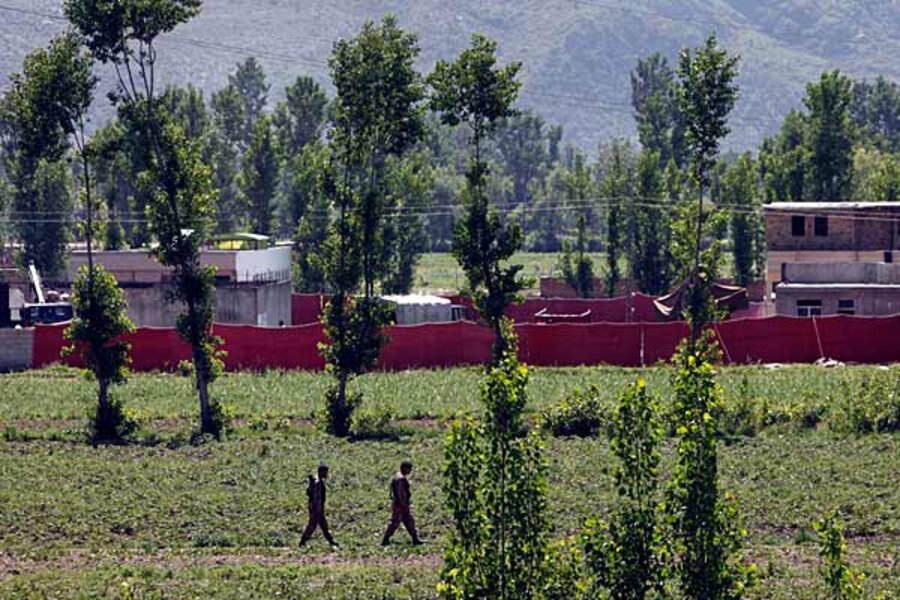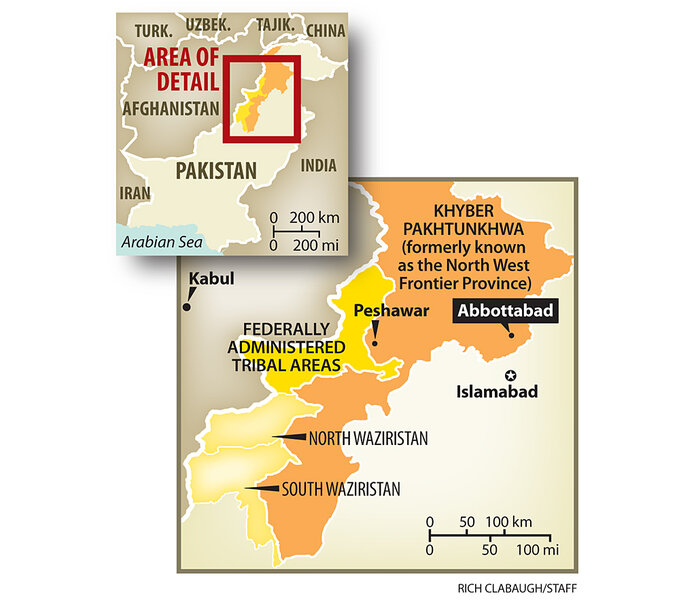Osama bin Laden dead: How the US found him
Loading...
| Washington
Osama bin Laden’s death proves a truism about the US struggle with terrorism: intelligence can be more important than firepower.
The strike team that killed bin Laden was small, with limited weapons. But years of painstaking intelligence work provided that team with the precise location of Al Qaeda’s leader.
The result was a 40-minute operation that may rank as one of the greatest raids in US military history. Al Qaeda surely will live on. But the elimination of its inspiration and founder must still be a crushing blow to the Islamist organization, as the tenth anniversary of its September 11 attacks on America approaches.
“By any measure, the operation was a tremendous success,” says Rick “Ozzie” Nelson, director of the homeland security and counterterrorism program at the Center for Strategic and International Studies in Washington.
As described by senior administration officials, the intelligence process that led in the end to a walled compound a half-mile from a Pakistani military academy was a slow and careful manhunt.
It began with a detainee. According to US officials, Khalid Sheikh Mohammed, mastermind of the 9/11 attacks, gave interrogators the pseudonym of a man he described as Osama bin Laden’s most trusted courier. This person was also a protégé of Mr. Mohammed and a trusted aide of Abu Faraj al-Libbi, a former Al Qaeda number three who was captured in 2005.
“They indicated he might be living with and protecting bin Laden,” said a senior administration official at a background briefing for reporters.
But they did not know this person’s real name. For years, US intelligence searched for him in vain.
Then, four years ago, they uncovered his identity. US officials won’t say how this was done. It took two more years of persistent effort to figure out in which areas of Pakistan the courier and his brother worked.
Still, US analysts could not figure out exactly where this courier lived. His tradecraft – measures taken to guard his own security – was too good.
But the care he took to cover his tracks led analysts to believe that he was doing something very sensitive for the Al Qaeda organization.
Last August, the US finally identified his home – and they were shocked when they did. It was a compound in Abbottabad, Pakistan, about 75 miles north of Islamabad. The house was large – about eight times larger than the average for the area. It was surrounded by 12- to 18-foot walls topped with barbed wire. Internal walls sectioned off different areas of the compound.
“The physical security measures of the compound are extraordinary,” said a senior administration official.
The property was valued at $1 million but had no phone or Internet connection. The courier and his brother had no means of support that could explain the luxury in which they lived.
US intelligence analysts looked at it from every angle, considering who else other than bin Laden could be living there. They conducted red team alternative analyses to check their work, according to intelligence officials.
No single candidate but the storied Al Qaeda leader seemed to fit.
“So the final conclusion, from an intelligence standpoint, was twofold. We had high confidence that a high-value target was being harbored by the brothers on the compound, and we assessed that there was a strong probability that that person was Osama bin Laden,” said a senior US official.
As outlined by administration officials, the intelligence process which led the US to bin Laden was not unusual. It was Manhunt 101 – get one piece of intelligence, use it to find another, and so on, up the trail to the target.
“This is how man-hunting works – whether it is a US Marshal trying to locate a criminal in the US, or US intelligence trying to locate a terrorist on the run. It is painstaking, slow work,” says Mr. Nelson of CSIS, a former member of the National Counterterrorism Center’s Directorate of Strategic Operational Planning.
Last September, the CIA began to work with President Obama to decide a US course of action. By mid-March, the administration decided to “pursue this in an aggressive way,” according to an administration officials.
Mr. Obama chaired five National Security Council meetings on the subject, according to the White House. He gave the final go-ahead for an attack on the morning of Friday, April 29.
Weather delayed the attack for a day.
Leon Panetta, current CIA chief and nominee for Secretary of Defense, was in charge of the military team that carried out the operation. When he and his aides heard the news that the raid had been successful and bin Laden positively identified, cheers rang through the room at CIA headquarters, according to the Associated Press.
In a statement, Mr. Panetta praised the “highly complex, innovative, and forward-leaning” clandestine operations that led to a dirt road and a complex housing the most wanted man in the world.
The CIA chief also praised the help provided by the National Security Agency and other branches of US intelligence.
“Persistent hard work produced the results the American people expect of their intelligence service,” he said.
On the other hand, US intelligence did not predict 9/11, nor has it stopped the so-called shoe bomber or other attacks.






